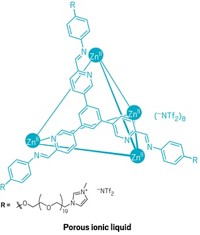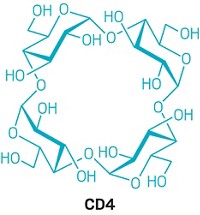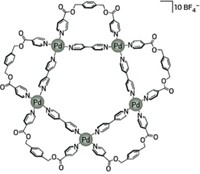Advertisement
Grab your lab coat. Let's get started
Welcome!
Welcome!
Create an account below to get 6 C&EN articles per month, receive newsletters and more - all free.
It seems this is your first time logging in online. Please enter the following information to continue.
As an ACS member you automatically get access to this site. All we need is few more details to create your reading experience.
Not you? Sign in with a different account.
Not you? Sign in with a different account.
ERROR 1
ERROR 1
ERROR 2
ERROR 2
ERROR 2
ERROR 2
ERROR 2
Password and Confirm password must match.
If you have an ACS member number, please enter it here so we can link this account to your membership. (optional)
ERROR 2
ACS values your privacy. By submitting your information, you are gaining access to C&EN and subscribing to our weekly newsletter. We use the information you provide to make your reading experience better, and we will never sell your data to third party members.
Synthesis
One-Pot Route To Nanocontainer
Eighteen molecular units condense to form covalent, hexameric host molecule
by Ron Dagani
January 9, 2006
| A version of this story appeared in
Volume 84, Issue 2
In a stroke of serendipity, chemists at Rutgers University have discovered a one-pot reaction in which 18 molecular components react sequentially to form, in high yield, a cavernous, covalent molecule that potentially could encapsulate other, smaller molecules (Angew. Chem. Int. Ed., published online Dec. 30, 2005, dx.doi.org/10.1002/anie.200504049).
Although a couple of covalent "nanocontainer" molecules have been synthesized previously, the new route is operationally far more efficient, and it also is atom-efficient. These features could be advantageous in potential applications such as drug delivery, separation science, catalysis, and sensing.
Peer reviewers of the paper, authored by Ralf Warmuth and coworkers, have been enthusiastic, calling it "elegant," "very impressive," and "spectacular." "This work will be a cornerstone in the development of covalent nanocontainers," one reviewer writes.
Warmuth's nanocontainer is an octahedral structure assembled from six bowl-shaped molecules called cavitands and 12 ethylene-1,2-diamine linkers. Each cavitand has four formyl groups on its rim, and these react with the 24 amino groups of the linkers to form 24 imine bonds.
This condensation is so efficient, Warmuth explains, because the imine bonds form reversibly, "allowing for error correction and ultimately furnishing the thermodynamically most stable product." Once the condensation is complete, the imine bonds are reduced with sodium borohydride so that the octahedral compound can be isolated in 63% yield and purified.
The Rutgers team, which includes Xuejun Liu, Yong Liu, and Gina Li, finds that the solvent is a key factor controlling the shape of the nanocontainer. Chloroform is the best solvent for making the octahedral assembly (a hexamer), and other solvents preferentially lead to formation of the octamer or the tetramer, according to Warmuth.
Last year, Darren A. Makeiff and John C. Sherman of the University of British Columbia, Vancouver, reported a related six-cavitand molecular vessel that entraps seven guest molecules (J. Am. Chem. Soc. 2005, 127, 12363). That synthesis involved four steps.
Warmuth's octahedral nanocontainer has an inner cavity of about 1,700 Å3, which he says is large enough to encapsulate two or three buckyballs (C60 molecules). Thus far, however, he and his coworkers haven't demonstrated that their nanocontainer can trap or slowly release any guest molecules, such as drugs. Those experiments are now in progress, Warmuth tells C&EN.






Join the conversation
Contact the reporter
Submit a Letter to the Editor for publication
Engage with us on Twitter